Arts & Culture
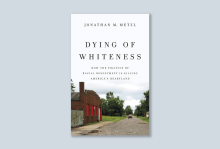
IMAGINE A MAN seized by a demon. He cannot be bound by chains or confined within walls. He is a danger to himself and everyone around him. In Dying of Whiteness, Jonathan M. Metzl lays out a compelling case that white folks are so convinced of an ideology of whiteness that we are willing to kill, and even to die, for it. One Christian way to talk about this would be to say that white people are possessed.
In his book, Metzl examines three public health case studies: gun culture in Missouri, particularly white male suicide; the failure to expand Medicaid in Tennessee; and the gutting of public schools under cruel budget and tax policies in Kansas. For each, he calculates the years of life lost because of poor political decisions made under an ideology of white supremacy.

THE WORD THAT comes to mind when considering American Journal: Fifty Poems for Our Time is gift. Edited by former U.S. Poet Laureate Tracy K. Smith, this anthology of poems from 50 living American poets addresses the nation with generosity. In her introduction, Smith describes American Journal as “an offering” for us to expand, renew, or establish our relationship with poetry and each other. She writes that she loves poems because they invite her to “sit still, listen deeply, and imagine putting [herself] in someone else’s unfamiliar shoes.”
American Journal presents 50 different takes on the American experience: a school field trip (“The Field Trip,” by Ellen Bryant Voigt); war (“Personal Effects,” by Solmaz Sharif); the shouldering of inequity on young, brilliant lives (“Mighty Pawns,” by Major Jackson); addiction (“My Brother at 3 AM,” by Natalie Diaz); work (“Minimum Wage,” by Matthew Dickman); language (“Music from Childhood,” by John Yau); and hope (“For the Last American Buffalo,” by Steve Scafidi).
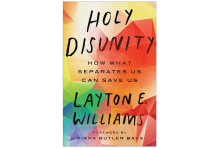
DISUNITY IS SO often seen as an evil: the breakdown of relationship, of community, of cohesion. But disunity doesn’t have to mean destruction. In the arguments and protests born from our disunified state, we hear hard but important truths that push back on our assumptions and our hubris. In our willingness to confront our own doubts, and others’, about things we’ve always assumed to be true, we are invited to discover new and deeper understandings of truth. In disunity, our differences and limitations and failures clash against one another, sometimes violently, but those clashes can also be an invitation for us to be stretched and expanded—or at least to understand that the world and humanity are more expansive than any one of us. Our hunger can turn us into enemies, seeking to deprive one another so that we ourselves might have enough. But our hunger also reminds us that we need more than ourselves; we are not sufficient alone. And even when our disunity puts us utterly and irrevocably at odds, when it demands that we be separate, that gulf between us offers space for each of us to grow—perhaps even toward each other.

Notes on Compassion
In Kishi Bashi’s fourth studio album, Omoiyari, he examines what history can teach us about America today. The forced relocation and internment of more than 117,000 Japanese Americans during World War II is evoked through poignant lyrics that paint parallels between then and now. Joyful Noise
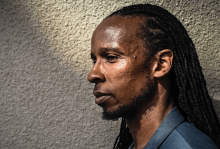
SOMEWHERE IN AMERICA, surely there lies a graveyard filled with racist bones. It’s abandoned and dry as Ezekiel’s valley. No one is asking if these bones can live, least of all the many people who proclaim they don’t have a racist bone in their body. Better they turn to dust, lest they be DNA-tested and matched.
But Ibram X. Kendi is laying claim to his. Founding director of the Antiracist Research and Policy Center at American University in D.C. and award-winning author of Stamped from the Beginning: The Definitive History of Racist Ideas in America, Kendi identifies his own racist beliefs and actions in his latest book, How to Be an Antiracist, a deeply researched blend of history, sociology, law, and memoir.
“One of the central messages in How to Be an Antiracist is that we’re all on a personal journey to move away from our upbringing in a racist nation. And that journey must be deeply self-reflective and self-critical,” Kendi told me. “This is hard work. It’s easy to be racist. It’s extremely hard to be antiracist. But it’s possible, and I wanted to model how we could do that.” Kendi defines a racist as anyone (including a person of color like himself) “who is supporting a racist policy through their actions or inaction or expressing a racist idea.” Likewise, an antiracist is anyone “who is supporting an antiracist policy through their actions or expressing an antiracist idea.”

IN A SMALL VENUE, I watched Mitski perch on a white chair behind a white table, fold her hands, and start to sing emotional ballads.
The 29-year-old musician was performing in Carrboro, N.C., from her fifth studio album, Be the Cowboy. It’s one of my favorites from 2018 and plays with the American cowboy mythology in its loneliness (“My God, I’m so lonely ... still nobody wants me,”) and longing (“I just can’t be without you”).
I expected a typical concert, hearing favorite songs and seeing Mitski’s personality. But I was jarred by the lack of emotion she showed. The entire time she sang, her face was resolute and hardened, a seeming contradiction with her heartrending lyrics.
Second, she danced sensually, even while her face remained impassive. She wore nothing “sexy”—a white T-shirt, biker shorts, and kneepads—as she executed carefully choreographed sequences. But she leaned forward, slanted her hips, and flicked her hair. She climbed onto the table and spread her legs toward the audience. Yet she never broke a smile, never performed the emotion of eroticism.

Darling of Mayans, Incas, and Aztecs, cochineal
conquered the ever-expanding world—
borne of female coccids boiled, dried, and ground
fine as dust, then woven with water, coaxing color
vibrant as any pink peppercorn, dye so prized,
long before Spain came, natives bred the prickly pear
on which the insects fed to bear fewer spines,
so, horsetail in hand, they could brush the parasites
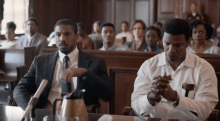
To Kill a Mockingbird and Just Mercy have notable parallels and important divergences: Like Atticus, Stevenson is defending a wrongfully accused black man from a racist community. But this time, there’s no white savior, and Stevenson isn’t going to lose the case.
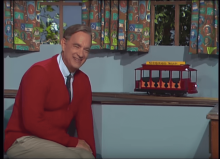
The new film A Beautiful Day in the Neighborhood thankfully avoids giving us a Fred Rogers biopic, one that hits rote beats that show us how Rogers grew into the saintly human we welcomed into our homes. Instead, it provides a kind of parable of the love and forgiveness and empathy that Rogers preached, one in which Rogers himself happens to feature significantly.
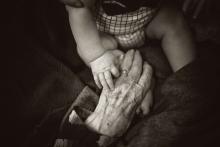
On the Sunday Gran died, I baptized a little girl sixteen months old. And I was grateful for the unending grace that knows neither limit of time nor space. And, as the water spilled down her rosy cheeks, I remembered how Gran held my firstborn, how Gran held me when I was a child, how I held Gran’s hand for the last time, just a few days before.

Dylan’s Christianity had less in common with Jesse Jackson’s and had more in common with Jerry Farwell’s. It fit comfortably within the perspectives of a reactionary Christianity that blamed liberalism and the Civil Rights movement for the nation’s religious, moral, and economic decline. The end times were near and the nation needed to prepare for God’s wrath.

A clear-eyed viewing demands lament for the suffering caused by war.

Toni Morrison understood that belief and faith are substantial to the sustaining force of black folks navigating both slavery and post-slavery traumas.

Sandra Cisneros and Erika Sanchez express joy when dicussing the messiness of being human.

The crowded opening reception featured keynote remarks by Mark S. Massa, S.J., and Rev. Gardiner Shattuck about the story’s key figures, Daniel Berrigan, a Catholic priest, and William Stringfellow, a civil rights lawyer and lay Protestant theologian.
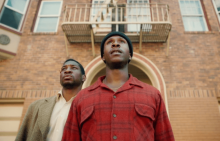
The Last Black Man in San Francisco is a film of operatic intensity, poetic emotion, political clarity, and a touch of magic realism.

By building a permanent memorial, we are refusing to let the truth be buried. The memorial will live above the surface for years and years to come. May it be a symbol of our commitment to bear witness to these atrocities and to honor the victims/survivors.
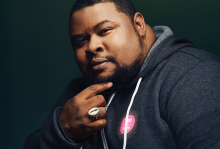
What is at the root of what one tastes? This is not an Alex Haley-like koan, but rather a historical and spiritual question.
Early in my career as a writer, I met Vertamae Smart-Grosvenor, author of Vibration Cooking or, The Travel Notes of a Geechee Girl. When she lived in Washington, D.C., we met on occasion at the local Safeway supermarket. Smart-Grosvenor was an American culinary anthropologist—and a food writer with a wonderful sense of humor.
Culinary historian Michael Twitty’s The Cooking Gene falls in the lineage of Smart-Grosvenor and maybe even the work of novelist and folklorist Zora Neale Hurston.
I first met Twitty years ago at Howard University in D.C. He was usually sitting in the main office of the African-American studies department in conversation with the secretary, Joyce Rose. One day I became aware of a change in his dress. Twitty may have been the only black person on Howard’s campus wearing a yarmulke.
Being black and Jewish is not new but remains intriguing. Howard is a place that prides itself on attracting a large number of students from Africa and the Caribbean. It upholds the tradition of advocating racial integration as well as the tenets of black nationalism. It’s an institution that can enhance one’s understanding of the various factors that define the black experience.

At higher educational arts institutions, green has become the new black. In the last year, museums at Bowdoin College, Brown University, Princeton University, University of Colorado Boulder, University of Maryland, University of Michigan, University of Utah, and Yale University have convened environmental and climate change-focused programming and exhibitions, with titles ranging from “Sea of Troubles: Rising Seas & Sinking Cities” to “Before the Deluge: Apocalyptic Floodscapes from John Martin to John Goto, 1789 to Now.”
The focus on nature and the dangers facing the environment raises the question: Are there unique opportunities and challenges for college and university art museums when addressing the environment? And more fundamentally: Can an art exhibit do more than simply preach—albeit beautifully—to the choir?
First and foremost, the humanities offer “effective, compelling storytelling,” according to Jeffrey J. Cohen, dean of humanities at Arizona State University, co-president of the Association for the Study of Literature and the Environment, and a teacher of environmental humanities.
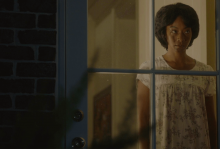
“I love the truth I find in dark films.”
In a 2003 speech titled “A Filmmaker’s Progress,” Sinister and Doctor Strange filmmaker Scott Derrickson, a Christian, made this statement in reference to spiritual and moral themes in his work. It’s an interesting idea to consider, not only because tales of terror get more popular this time of year, but also because Derrickson does most of his work in horror, a genre that doesn’t often get positive associations with faith.
Horror is typically considered exploitative, good for nothing more than the basest forms of gratuitousness that cinema can offer. But in fact horror is a smarter, more diverse genre than it’s given credit for. It is one of the best cinematic vehicles for social commentary.